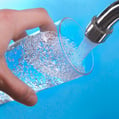 On December 7, the US Environmental Protection Agency (EPA) revised the Hazard Ranking System (HRS) it uses to compare site contamination and to designate the most hazardous sites for the National Priority List (NPL) for cleanup. This revision adds “subsurface intrusion” – i.e., intrusion of hazardous liquids such as contaminated groundwater and/or vapors from subsurface chemical contamination into structures – to the potential pathways to public harm evaluated by HRS when evaluating contaminated sites. This represents the first additional pathway added in nearly three decades. The revisions will become effective 60 days after publication in the Federal Register, presumably during the first quarter of 2017.
On December 7, the US Environmental Protection Agency (EPA) revised the Hazard Ranking System (HRS) it uses to compare site contamination and to designate the most hazardous sites for the National Priority List (NPL) for cleanup. This revision adds “subsurface intrusion” – i.e., intrusion of hazardous liquids such as contaminated groundwater and/or vapors from subsurface chemical contamination into structures – to the potential pathways to public harm evaluated by HRS when evaluating contaminated sites. This represents the first additional pathway added in nearly three decades. The revisions will become effective 60 days after publication in the Federal Register, presumably during the first quarter of 2017.
How Does HRS Work?
The national “Superfund” law (formally, the Comprehensive Environmental Response, Compensation and Liability Act (CERCLA) of 1980) created a wide variety of requirements and tools intended to ensure the identification and cleanup of chemically-contaminated sites throughout the United States. EPA applies HRS to evaluate sites, with the highest ranked (most hazardous) sites qualified for placement on the NPL – which not only increases administrative attention to privately-funded cleanups but makes these sites eligible for federal money from the “Superfund” itself when private money proves inadequate.
HRS is a set of scoring rubrics designed to allow EPA to compare hazards across sites. They consist of several analytical methodologies for estimating the potential health risks posed by a site. Since 1990 (the last major revision), HRS has considered four potential pathways of exposure:
-
Ground water migration (drinking water).
-
Surface water migration (drinking water, human food chain, sensitive environments).
-
Soil exposure (resident population, nearby population, sensitive environments).
-
Air migration (population, sensitive environments).
For each site, EPA scores each pathway based on a set of characteristics:
-
Likelihood of release (observed or potential release)
-
Waste characteristics (toxicity and quantity of hazardous substances present and their mobility).
-
Targets (population potentially at risk based on number of people and proximity, and sensitive environments that might be harmed).
The pathway scores are then combined to give the site an HRS score ranging from 0 to 100. A score of 28.5 or higher places the site on the NPL (there have been 1200-1300 sites on the NPL at any time in recent decades; sites are added after HRS scoring and removed after cleanup). The HRS ranking system is designed to ensure that a high risk from any one or more of the pathways will tend to produce a high ranking, and thus a high priority for cleanup.
EPA notes that subsurface intrusion was not added as a pathway when HRS was revised in 1990 because the science was not sufficiently advanced to support a reliable evaluation rubric. In the intervening years, however, EPA has considered subsurface intrusion in the design of protective and cleanup programs at sites after their inclusion on the NPL based on other pathways.
How Will EPA Consider Subsurface Intrusion in HRS Evaluations?
EPA is adding evaluation of the relative risk posed by subsurface intrusion of hazardous substances into regularly occupied structures, by restructuring the soil exposure pathway from the 1990 HRS to include subsurface intrusion. For purposes of NPL, EPA is defining this as:
"Subsurface intrusion: The migration of hazardous substances from the unsaturated zone and/or ground water into overlying structures."
EPA is renaming the “soil exposure pathway” within HRS as the “soil exposure and subsurface intrusion pathway” to reflect both components of the new pathway. The maximum score for the renamed pathway remains the same (i.e., relative to the other pathways), but it will now be based on a combination of the two component scores—soil exposure and subsurface intrusion – so both can contribute to the numerical ranking produced by HRS. EPA justifies this additive approach by noting that the two elements reflect different exposures: the soil exposure component reflects exposures to people outside structures and focuses on ingestion, while the subsurface intrusion component reflects exposures inside a structure and focuses on inhalation.
EPA is making conforming technical changes throughout the NPL portions of the Superfund National Contingency Plan. The agency is not changing the other three HRS pathways, except it will use a reference concentration instead of a reference dose to determine a hazardous substance’s health-based benchmark in the air migration pathway.
Self-Evaluation Checklist
Does the organization own or occupy any sites with surface, subsurface and/or groundwater contamination?
Has the organization contributed, or might have contributed, to contamination at any other site (e.g., if the organization generated hazardous waste that was transported to another location)?
Is the organization aware of any formal evaluations of contamination at any such site, including whether the possibility of subsurface intrusion into structures has been evaluated?
Where Can I Go For More Information?
-
EPA HRS Subsurface Intrusion web portal
-
Final rule adding subsurface intrusion to HRS (prepublication version)
Specialty Technical Publishers (STP) provides a variety of single-law and multi-law services, intended to facilitate clients’ understanding of and compliance with requirements. These include:
About the Author
 Jon Elliott is President of Touchstone Environmental and has been a major contributor to STP’s product range for over 25 years. He was involved in developing 13 existing products, including Environmental Compliance: A Simplified National Guide and The Complete Guide to Environmental Law.
Jon Elliott is President of Touchstone Environmental and has been a major contributor to STP’s product range for over 25 years. He was involved in developing 13 existing products, including Environmental Compliance: A Simplified National Guide and The Complete Guide to Environmental Law.
Mr. Elliott has a diverse educational background. In addition to his Juris Doctor (University of California, Boalt Hall School of Law, 1981), he holds a Master of Public Policy (Goldman School of Public Policy [GSPP], UC Berkeley, 1980), and a Bachelor of Science in Mechanical Engineering (Princeton University, 1977).
Mr. Elliott is active in professional and community organizations. In addition, he is a past chairman of the Board of Directors of the GSPP Alumni Association, and past member of the Executive Committee of the State Bar of California's Environmental Law Section (including past chair of its Legislative Committee).
You may contact Mr. Elliott directly at: tei@ix.netcom.com
